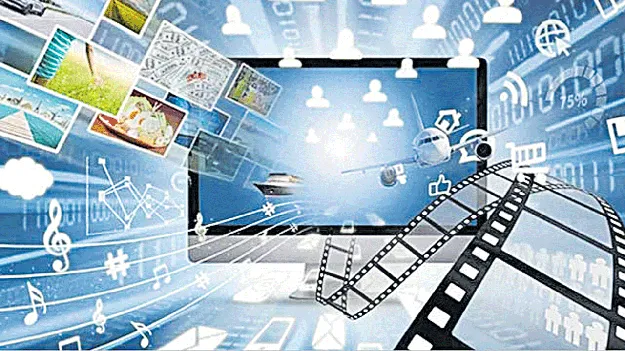New Engineering Branches
ఇంజనీరింగ్లో కొత్త బ్రాంచ్లు
ABN , Publish Date - Jun 16 , 2025 | 05:30 AM
ఇండస్ట్రీ డిమాండ్లతోపాటు, కొత్త కొత్త టెక్నాలజీలను అందిపుచ్చుకోవడానికి మన దేశంలోని ఐఐటీ, ఎన్ఐటీలు ముందు ఉంటున్నాయి. అందులో భాగంగా ఎప్పటికప్పుడు అప్డేట్ అవుతూ ఇంటర్ డిసిప్లినరీ, కొత్త ఇంజనీరింగ్ బ్రాంచ్లను ప్రారంభిస్తున్నాయి. ఇటీవలి కాలంలో ఐఐటీలు, ఎన్ఐటీలు ప్రారంభించిన కొత్త బ్రాంచ్లు ఏమిటో చూద్దాం.
1. ఆర్టిఫీషియల్ ఇంటెలిజెన్స్(ఏఐ) అండ్ డేటా సైన్స్
ఏఐ అండ్ డేటా సైన్స్, డేటా సైన్స్ అండ్ ఏఐ, కంప్యూటర్ సైన్స్ అండ్ ఏఐ ఇలా రకరకాల పేర్లతో లేదా కాంబినేషన్లతో హైదరాబాద్, గౌహతి, ఢిల్లీ, జోద్పూర్, పాట్నా ఐఐటీలు ఈ బ్రాంచీలను అందిస్తున్నాయి.
ఉద్యోగ అవకాశాలు: ఏఐఎంఎల్ ఇంజనీర్, డేటా సైంటిస్ట్, బిజినెస్ అనలిస్ట్, ఎన్ఎల్పీ ఇంజనీర్, కంప్యూటర్ విజన్ ఇంజనీర్గా పనిచేయవచ్చు.
ఏయే కంపెనీల్లో అవకాశాలు: గూగుల్, మైక్రోసాఫ్ట్, అమెజాన్ వంటి టెక్ దిగ్గజాలతోపాటు, స్టార్ట్పలు, ఫైనాన్స్(క్వాంటమ్ రోల్స్), హెల్త్ కేర్(ఏఐ డయాగ్నస్టిక్స్), ఈ కామర్స్ తదితరాల్లో వీరికి అవకాశాలు ఉంటాయి.
జీతభత్యాలు: మన దేశంలో ఐఐటీలు, ఎన్ఐటీల వంటి సంస్థల్లో చదివిన వారికి 12 నుంచి 30 లక్షలు. విదేశాల్లో అయితే 20 నుంచి 50 లక్షల వరకు ఉండొచ్చు.
భవిష్యత్తు: ఆటోమేషన్, రోబోటిక్స్ తదితరాల్లో ఏఐ కీలకంగా మారుతుంది. అలాగే జనరేటివ్ ఏఐ అంటే చాట్ జీపీటీ తరహా మోడల్స్ కారణంగా వీరికి డిమాండ్ చాలా ఎక్కువగా ఉంటుంది.
2. రోబోటిక్స్ అండ్ ఆటోమేషన్ మెకట్రానిక్స్
అలహాబాద్(ప్రయాగ్రాజ్), హైదరాబాద్, జోద్పూర్ ఐఐటీలు ఈ బ్రాంచ్ను అందిస్తున్నాయి.
అవకాశాలు: రోబోటిక్స్ ఇంజనీర్, ఆటోమేషన్ స్పెషలిస్ట్, కంట్రోల్ సిస్టమ్ ఇంజనీర్, డిఫెన్స్ అండ్ స్పేస్లో ఆర్ అండ్ డీలుగా పని చేయవచ్చు.
ఏయే కంపెనీలు: టెస్లా, ఫాక్స్కాన్ వంటి మాన్యుఫాక్చరింగ్, ఇస్రో, స్పేస్ ఎక్స్ వంటి అంతరిక్ష సంస్థలు, డీఆర్డీఓ వంటి రక్షణ సంస్థలు, సీమెన్స్, బోష్ వంటి ఇండస్ట్రియల్ ఆటోమేషన్ కంపెనీల్లో అవకాశాలు ఉంటాయి.
జీతభత్యాలు: మన దేశంలో 8 నుంచి 20 లక్షలు. యూఎస్, జర్మనీ, జపాన్ వంటి విదేశాల్లోని రోబోటిక్స్ హబ్స్లో అయితే 20 నుంచి 60 లక్షలు.
భవిష్యత్తు: ఇండస్ట్రీ 4.0, స్మార్ట్ ఫ్యాక్టరీలు, అటానమస్ వెహికిల్స్ వంటివి వీరికి డిమాండ్ను తెస్తాయి.
3. రెన్యువబుల్ ఎనర్జీ, ఎలకా్ట్రనిక్ వెహికిల్(ఈవీ) ఇంజనీరింగ్
ఎనర్జీ సైన్స్ అండ్ ఇంజనీరింగ్ పేరుతో బాంబే ఐఐటీ, ఎనర్జీ ఇంజనీరింగ్ పేరుతో ఢిల్లీ ఐఐటీ, సస్టయినబుల్ ఎనర్జీ ఇంజనీరింగ్ పేరుతో మద్రాస్ ఐఐటీ ఈ బ్రాంచ్లను అందిస్తున్నాయి.
అవకాశాలు: ఈవీ డిజైన్ ఇంజనీర్, సోలార్ విండ్ ఎనర్జీ కన్సల్టెంట్స్, బ్యాటరీ టెక్నాలజిస్ట్, సస్టయినబుల్ అనలిస్ట్ తదితర ఉద్యోగాలు ఉంటాయి.
ఏయే కంపెనీలు: టెస్లా, టాటా మోటార్స్, ఓలా ఎలక్ట్రిక్, అదానీ గ్రీన్, సీమెన్స్ గమేసా, ప్రభుత్వ విద్యుత్ ప్రాజెక్ట్లు తదితరాల్లో వీరికి అవకాశాలు ఉంటాయి.
జీతభత్యాలు: మన దేశంలో 6 నుంచి 18 లక్షలు. విదేశాల్లో ఇంకా చాలా ఎక్కువగా ఉంటుంది.
భవిష్యత్తు: 2030 సంవత్సరం వరకు 500 గిగా వాట్ పునరుత్పాదక ఇంధనాలను తయారు చేయాలని భారత దేశం లక్ష్యంగా పెట్టుకుంది. అలాగే ఈవీ బూమ్ కూడా వీరికి పెద్ద ఎత్తున అవకాశాలను కల్పించనుంది.
4. మెటీరియల్స్ సైన్స్ అండ్ ఇంజనీరింగ్ (నానో టెక్నాలజీ, ఇతర స్మార్ట్ మెటీరియల్స్ కేంద్రంగా)
ఈ బ్రాంచ్ను కాన్పూర్, మద్రాస్, బాంబే ఐఐటీలు అందిస్తున్నాయి.
5. క్వాంటమ్ టెక్నాలజీ
క్వాంటమ్ సైన్స్ అండ్ టెక్నాలజీలో బీఎస్సీ డిగ్రీని మద్రాస్ ఐఐటీ అందిస్తుండగా, క్వాంటమ్ టెక్నాలజీ్సపై ఐఐటీ జోద్పూర్లో బ్రాంచ్ ఉంది.
అవకాశాలు: క్వాంటమ్ ఆల్గోరిథమ్ డెవలపర్, క్వాంటమ్ హార్డ్వేర్ ఇంజనీర్, క్రిప్టోగ్రఫీ రీసెర్చర్ వంటి ఉద్యోగాలు చేయవచ్చు.
ఏయే కంపెనీలు: ఇండియన్ ఇన్స్టిట్యూట్ ఆఫ్ సైన్స్, టాటా ఇన్స్టిట్యూట్ ఆఫ్ ఫండమెంటల్ రీసెర్చ్ వంటి పరిశోధనశాలలు, ఐబీఎమ్, గూగుల్ క్వాంటమ్ ఏఐ వంటి పెద్ద టెక్ సంస్థలు, క్వాంటన్ ఎన్క్రిప్షన్ వంటి రక్షణ సంస్థల్లో పనిచేయవచ్చు.
జీతభత్యాలు: భారతదేశంలో రీసెర్చ్ స్టార్ట్ప్సలో 15 నుంచి 30 లక్షలు. విదేశాల్లో సుమారు లక్షన్నర డాలర్లు.
భవిష్యత్తు: ఈ రంగాలు ఇంకా ప్రాథమిక దశలోనే ఉన్నాయి. కంప్యూటింగ్, క్రిప్టోగ్రఫి, మెటీరియల్సైన్స్లు వేగంగా ఎదిగే అవకాశం ఉంది.
6. బయో ఇంజనీరింగ్, బయో మెడికల్ ఇంజనీరింగ్
ఈ బ్రాంచ్లను ఢిల్లీ, బాంబే, కాన్పూర్, హైదరాబాద్ల్లోని ఐఐటీలు అందిస్తున్నాయి.
అవకాశాలు: మెడికల్ డివైజ్ డిజైనర్, బయో మెకానిక్స్ ఇంజనీర్, హెల్త్కేర్ ఏఐ స్పెషలిస్ట్
ఏయే కంపెనీలు: బయోకాన్- డాక్టర్ రెడ్డీస్ వంటి ఫార్మా కంపెనీలు, సీమెన్స్ హీల్ థిన్నర్స్ వంటి మెడ్టెక్ కంపెనీలు, ఎయిమ్స్, ఐసీఎంఆర్ వంటి పరిశోధన సంస్థల్లో అవకాశాలు ఉంటాయి.
జీతభత్యాలు: భారతదేశంలో 6 నుంచి 15 లక్షలు. విదేశీ మెడికల్ హబ్స్లో ఇంకా ఎక్కువగా ఉంటుంది.
భవిష్యత్తు: పెరుగుతున్న జనాభా, ఏఐ ఆధారిత హెల్త్కేర్ ఉత్పత్తుల కారణంగా వీరికి మంచి డిమాండ్ ఉంటుంది.
6. కంప్యూటేషనల్ ఇంజనీరింగ్(ఏఐ + మెకానిక్స్ డిజైన్)
ఈ బ్రాంచ్ హైదరాబాద్, గాంధీనగర్ ఐఐటీల్లో ఉంది.
7. ఎలక్ర్టిక్ వెహికిల్స్(ఈవీ) అండ్ మొబిలిటీ ఇంజనీరింగ్
మద్రాస్ ఐఐటీలో మొబిలిటీ ఇంజనీరింగ్, ఢిల్లీ ఐఐటీలో ట్రాన్స్పోర్టేషన్ ఇంజనీరింగ్ ఉంది
8. సైబర్ సెక్యూరిటీ ఇన్ఫర్మేషన్ సెక్యూరిటీ
కాన్పూర్ ఐఐటీలో సైబర్ సెక్యూరిటీ, జోద్పూర్ ఐఐటీలో కంప్యూటర్ సైన్స్ అండ్ సైబర్ సెక్యూరిటీ బ్రాంచ్లు ఉన్నాయి.
అవకాశాలు: ఎథికల్ హ్యాకర్, సైబర్ సెక్యూరిటీ అనలిస్ట్, థ్రెట్ ఇంటెలిజెన్స్ స్పెషలిస్ట్, బ్లాక్చైన్ సెక్యూరిటీ ఎక్స్పర్ట్ తదితరాలు పనిచేయవచ్చు.
ఏయే కంపెనీలు: టీసీఎస్, ఇన్ఫోసిస్ వంటి దిగ్గజ కంపెనీలు, సెర్ట్ ఇన్ వంటి రక్షణ సంస్థలు, పేటీఎమ్-రాజోర్ పే వంటి ఫిన్టెక్ కంపెనీలు, పాలో ఆల్టో - క్రౌడ్ స్ట్రైక్ వంటి గ్లోబల్ సైబర్ సెక్యూరిటీ సంస్థల్లో పనిచేయవచ్చు.
జీతభత్యాలు: భారతదేశంలో 10 నుంచి 25 లక్షలు. విదేశాల్లో సుమారు లక్ష డాలర్లు.
భవిష్యత్తు: భవిష్యత్తు సైబర్ యుద్ధాలు జరిగే కాలం, 5జి క్లౌడ్ సెక్యూరిటీ అవసరాలు వీరి డిమాండ్ను బాగా పెంచుతాయి.
9. కాగ్నెటివ్ సైన్స్(హ్యూమన్-కంప్యూటర్ ఇంటరాక్షన్, ఏఐ+ సైకాలజీ)
గాంధీ నగర్, కాన్పూర్ ఐఐటీలో కాగ్నెటివ్ సైన్స్లో డ్యూయల్ డిగ్రీ కోర్సు ఉంది.
అవకాశాలు: యూఎక్స్యూఐ డిజైనర్, ఏఐ ఎథీస్ట్, న్యూరోసైన్స్ ఇంజనీర్(బ్రెయిన్ కంప్యూటర్ ఇంటర్ఫేస్) తదితరాలుగా పనిచేయవచ్చు.
ఏయే కంపెనీలు: టెక్ కంపెనీలైన మైక్రోసాఫ్ట్ రీసర్చ్, మెటా, హెల్త్కేర్లో న్యూరో స్టార్ట్ప్సలో అవకాశాలు ఉంటాయి.
జీతభత్యాలు: యూఎక్స్ రోల్స్లో అయితే 10 నుంచి 25 లక్షలు. పరిశోధనలవైపు వెళితే ఇంకా ఎక్కువ ఉంటుంది.
భవిష్యత్తు: ఏఐ ఎథిక్స్, మెటావర్స్, ఏఆర్వీఆర్లో కాగ్నిటీవ్ సైన్స్ నిపుణుల అవసరం ఉంటుంది.
ఇంకొన్ని..
ఇంటర్నెట్ ఆఫ్ థింగ్స్(ఐఓటీ), సైబర్ ఫిజికల్ సిస్టమ్స్
అవకాశాలు: ఐఓసీ సొల్యూషన్స్ ఆర్కిటెక్ట్, ఎంబెడడ్ సిస్టమ్ ఇంజనీర్, స్మార్ట్ సిటీ కన్సల్టెంట్గా పనిచేయవచ్చు.
ఏయే కంపెనీలు: జియో, ఎయిర్టెల్ వంటి టెలీకామ్ కంపెనీల్లో, ఎల్అండ్ టీ, సీమెన్స్ వంటి స్మార్ట్ ఇన్ర్ఫాస్ట్రక్చర్, ఐవోటీ ఆధారిత ఫార్మింగ్ అగ్రిటెక్ కంపెనీల్లో అవకాశాలు ఉంటాయి.
జీతభత్యాలు: భారతదేశంలో 8 నుంచి 20 లక్షలు. గ్లోబల్ ఐటీ మార్కెట్ డిమాండ్ బాగా ఉంది.
భవిష్యత్తు: 5జీ బాగా పెరుగుతోంది. ఐఓటీ ఆధారంగా స్మార్ట్సిటీలు తయారవుతున్నాయి.
మెటీరియల్స్ సైన్స్ (స్మార్ట్ మెటీరియల్స్ నానో టెక్)
అవకాశాలు: నానోటెక్ రీసెర్చర్, కాంపోజిట్ మెటీరియల్స్ ఇంజనీర్, సెమీ కండక్టర్ మెటీరియల్స్ స్పెషలిస్ట్ తదితరాలుగా పనిచేయవచ్చు.
ఏయే కంపెనీలు: ఇంటెల్, టీఎ్సఎమ్సీ వంటి సెమీ కండక్టర్ కంపెనీల్లో, ఇస్రో, బోయింగ్ వంటి స్పేస్ సంస్థల్లో, ఈబీ బ్యాటరీ, రీసర్చ్ అండ్ డెవల్పమెంట్లో విభాగాల్లో వీరికి అవకాశాలు ఉంటాయి.
జీతభత్యాలు: భారతదేశంలో 7 నుంచి 18 లక్షలు. విదేశీ పరిశోధక సంస్థల్లో చాలా ఎక్కుగా ఉంటుంది.
భవిష్యత్తు: చిప్స్, ఈవీలు, స్పెస్ టెక్నాలజీ బాగా పెరుగుతుండడంతో డిమాండ్కు తిరుగులేదు.
‘కీ’ ట్రెండ్స్
ఏఐ, ఎంఎల్, డేటా సైన్స్ అనేవి ఇప్పుడున్న పాపులర్ ట్రెండ్స్
పునరుత్పాదన ఇంధనాలు, ఈవీలపై అందరి దృష్టి ఉంది.
క్వాంటమ్ టెక్ అండ్ సైబర్ సెక్యూరిటీ అనేవి అత్యంత డిమాండ్ ఉన్న రంగాలు.
ఇప్పుడు సంప్రదాయ కోర్సులను ఇంటర్ డిసిప్లినరీ కోర్సులు రిప్లేస్ చేస్తున్నారు. ఉదాహరణకు కంప్యూటర్ + ఏ రంగం అయితే ఆ రంగానికి సంబంధించిన కోర్సు దీనికి చేరుతోంది.
ఐఐటీలు, ఎన్ఐటీలు ప్రవేశపెట్టిన ఈ కోర్సులకు ఉద్యోగ అవకాశాలు అత్యంత ఎక్కువగా ఉంటాయి. ఎందుకంటే టెక్నలాజికల్ అడ్వాన్స్మెంట్స్, ఇండస్ట్రీ అవసరాలతోపాటు, మేక్ ఇన్ ఇండియా, డిజిటల్ ఇండియా, నేషనల్ ఏఐ స్ట్రాటజీ మొదలైన ప్రభుత్వ చొరవలకు అనుగుణంగా డిజైన్ చేసిన కోర్సులు ఇవి.

.png)


